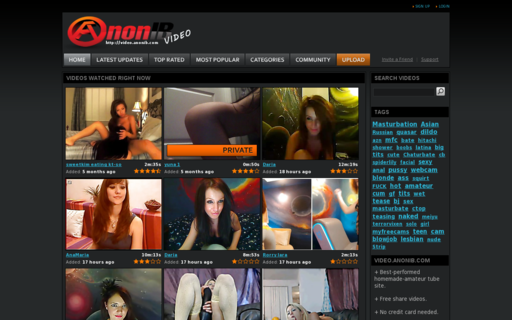Introduction to AnonIB
The internet is a vast landscape filled with endless possibilities, but it also harbors dark corners where anonymity reigns. One such corner was AnonIB, an anonymous image board that captured the attention—and controversy—of countless users. It was a place where anything could be shared without consequence, yet it quickly became synonymous with chaos and illicit activities.
As we delve into the rise and fall of AnonIB, we’ll explore how something initially perceived as liberating spiraled out of control, leading to its eventual downfall. Join us on this journey through digital anonymity’s highs and lows, uncovering what made this platform both alluring and dangerous.
The Controversy Surrounding Anonymous Image Boards
Anonymous image boards have long been a hotbed of controversy. These platforms allow users to post images and comments without revealing their identities, which can lead to both creative expression and unethical behavior.
On one hand, anonymity fosters freedom of speech. People share ideas openly without fear of judgment. This openness has spurred countless discussions on various subjects.
Conversely, the lack of accountability has led to significant issues. Harassment, hate speech, and illegal content often thrive in these unmonitored spaces. The absence of moderation creates an environment where harmful activities can flourish unchecked.
Critics argue that this type of forum enables toxic behavior while shielding perpetrators from consequences. As such, anonymous image boards continue to face scrutiny from media outlets and advocacy groups alike. Each incident further fuels the debate over online privacy versus social responsibility in digital interactions.

The Rise of AnonIB
AnonIB emerged in the early 2010s as a platform where anonymity thrived. Users flocked to its virtual doors, seeking freedom from the constraints of traditional social media.
The allure was undeniable. AnonIB offered raw, unfiltered content that appealed to those craving authenticity. Memes, images, and discussions flowed freely without the fear of repercussion.
This sense of liberation drew a diverse user base—from casual posters to seasoned internet veterans—each contributing their unique voice and perspective. The vibrant community created an environment unlike any other.
As interest grew, so did the platform’s notoriety. It quickly became infamous for hosting controversial content that mainstream sites wouldn’t dare touch. This reputation only fueled the site’s popularity further. With every shared image or post, AnonIB solidified its place in online culture—a beacon for those who valued anonymity above all else.
The Dark Side of AnonIB
AnonIB thrived on anonymity, but this freedom came at a steep price. The platform became notorious for hosting explicit content and illegal activities. Users often shared private images without consent, leading to severe violations of privacy.
This culture of recklessness fostered harassment and bullying among users. Many individuals found themselves targeted by thousands online, with no way to reclaim control over their lives. AnonIB’s unregulated environment encouraged the spread of harmful material that included revenge porn and hate speech.
The site attracted malicious actors who exploited its anonymity for criminal purposes. Cyberbullying escalated as trolls hid behind avatars while wreaking havoc on unsuspecting victims’ lives. This dark underbelly turned AnonIB into a breeding ground for distress and pain instead of an outlet for expression. The consequences were far-reaching, affecting countless lives beyond just digital interactions.
Legal Action Against AnonIB
Legal troubles for AnonIB began to mount as its notoriety grew. The platform was often associated with illicit activities, leading to scrutiny from law enforcement agencies.
Victims of cyberbullying and harassment started to speak out. They sought justice against those who used the site maliciously. This resulted in numerous lawsuits targeting both users and the platform itself. In response, various governments implemented stricter regulations on anonymous forums. Authorities aimed to hold platforms accountable for user-generated content.
High-profile cases gained media attention, amplifying calls for change within online communities. Legal experts debated free speech versus accountability in digital spaces. As pressure mounted, AnonIB struggled to maintain its operations amidst these challenges. The legal landscape became a pivotal factor in shaping its trajectory moving forward.
The Downfall of AnonIB
The downfall of AnonIB was swift and dramatic. Initially, it thrived on the allure of anonymity. Users flocked to share images without fear of repercussion. This very freedom became its undoing. Reports of harassment and illegal content began to surface. The site’s reputation took a hit as more people recognized its darker side.
Law enforcement agencies started taking notice. Legal actions were launched against those behind the platform. This scrutiny intensified over time, creating an atmosphere of paranoia among users.
As the walls closed in, many fled to other platforms that promised similar anonymity but with less risk. The once-thriving community began to dwindle significantly. Eventually, without adequate support or user engagement, AnonIB struggled just to maintain operations. Its vibrant threads turned into ghost towns where activity barely flickered anymore.
Lessons Learned from the Fall of AnonIB
The rise and fall of AnonIB offers crucial insights into the dynamics of online anonymity. It highlights how the allure of being untraceable can lead to both creativity and chaos. Users often felt empowered, yet this freedom came with significant risks.
Moderation is essential for any community. Without it, harmful behavior can proliferate quickly. AnonIB’s lack of oversight ultimately contributed to its demise. Privacy versus accountability remains a pressing debate in the digital landscape. The platform pushed boundaries but also exposed vulnerabilities that led to serious consequences for many involved.
The importance of responsibility cannot be overlooked. Online spaces thrive when users respect each other’s boundaries while embracing their rights to express themselves freely. Balancing these elements is key in fostering healthier communities moving forward.
Conclusion
The story of AnonIB serves as a stark reminder of the dual nature of anonymity on the internet. It began as a haven for free speech and self-expression, attracting users who sought both community and creativity without societal constraints. However, this freedom quickly spiraled into chaos. The platform became associated with cyberbullying, harassment, and illegal activities.
As legal actions mounted against AnonIB, it highlighted how unregulated spaces could lead to significant consequences not just for individuals but also for entire communities. Its decline was swift yet inevitable once accountability came knocking.
The lessons drawn from AnonIB’s rise and fall are crucial in understanding our digital landscape today. They teach us about the fine balance between anonymity and responsibility—a lesson that resonates beyond image boards to all corners of the web. While anonymous platforms continue to exist, they must navigate these challenges carefully or risk facing similar fates as AnonIB did in its turbulent journey through cyberspace.


